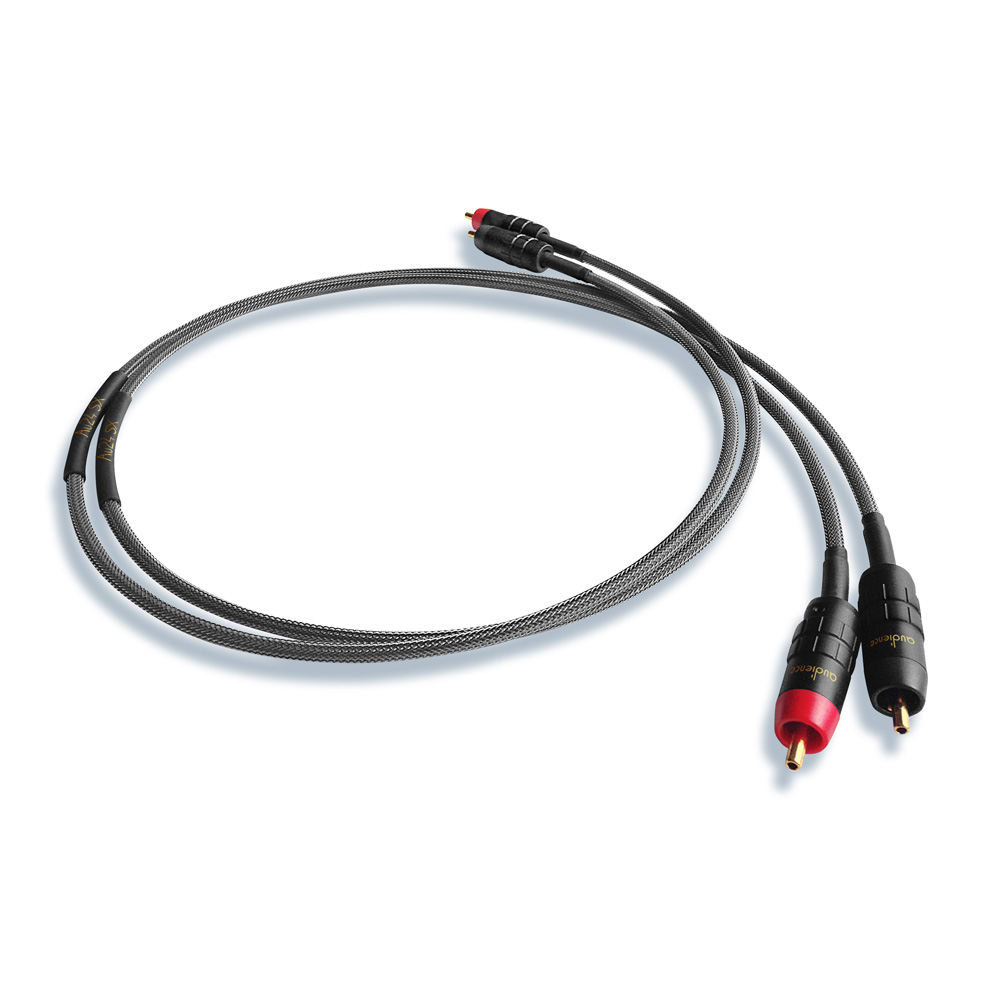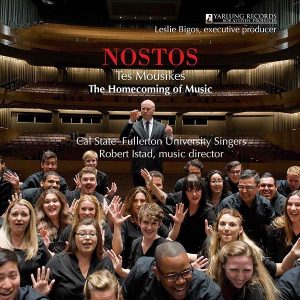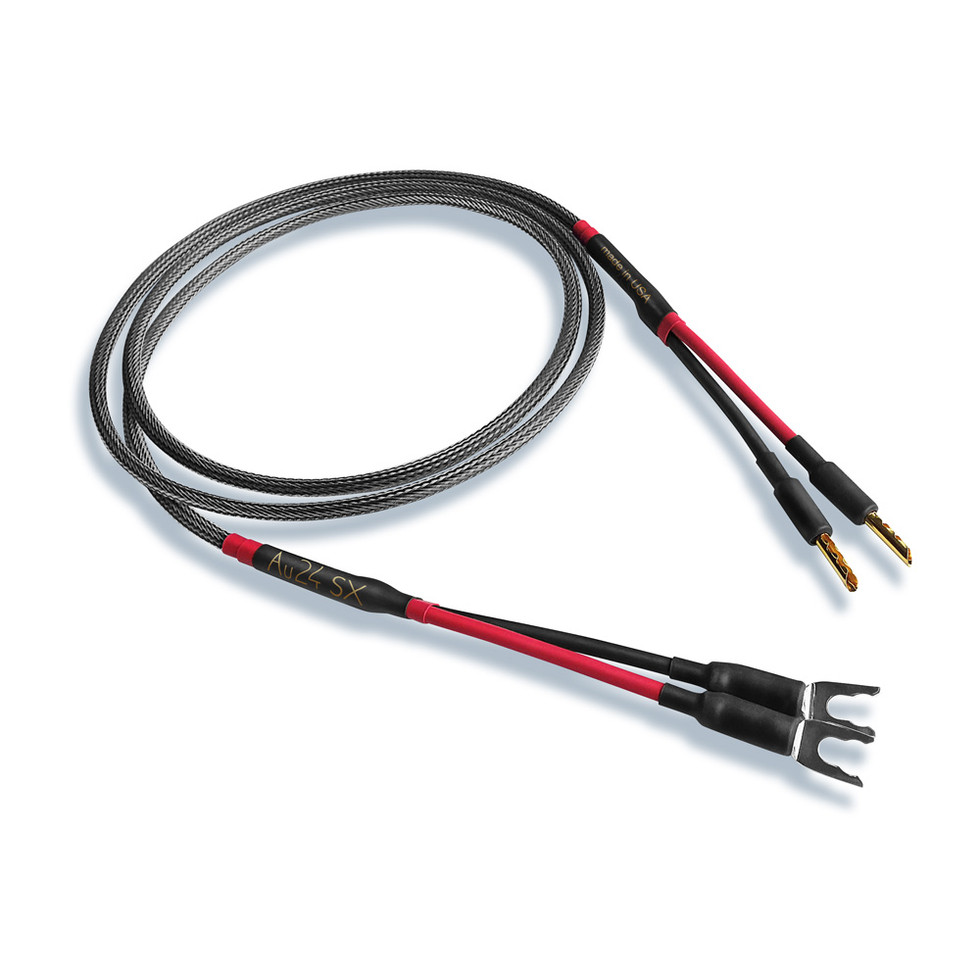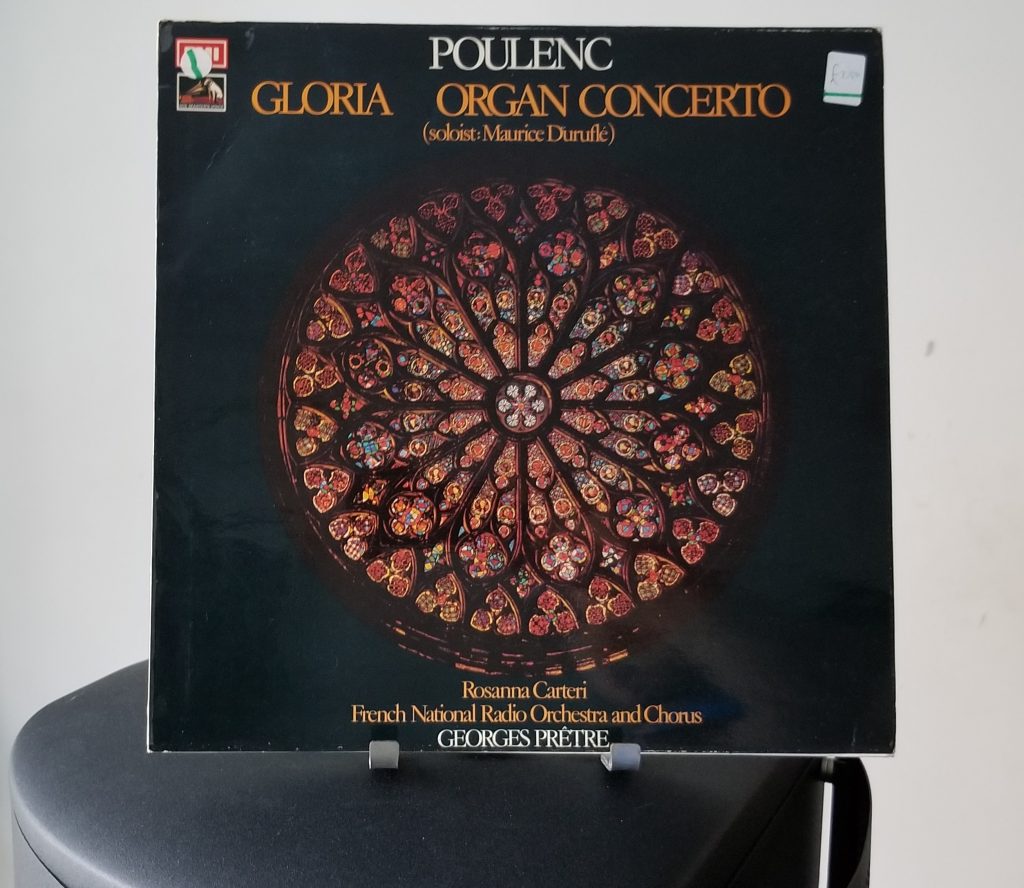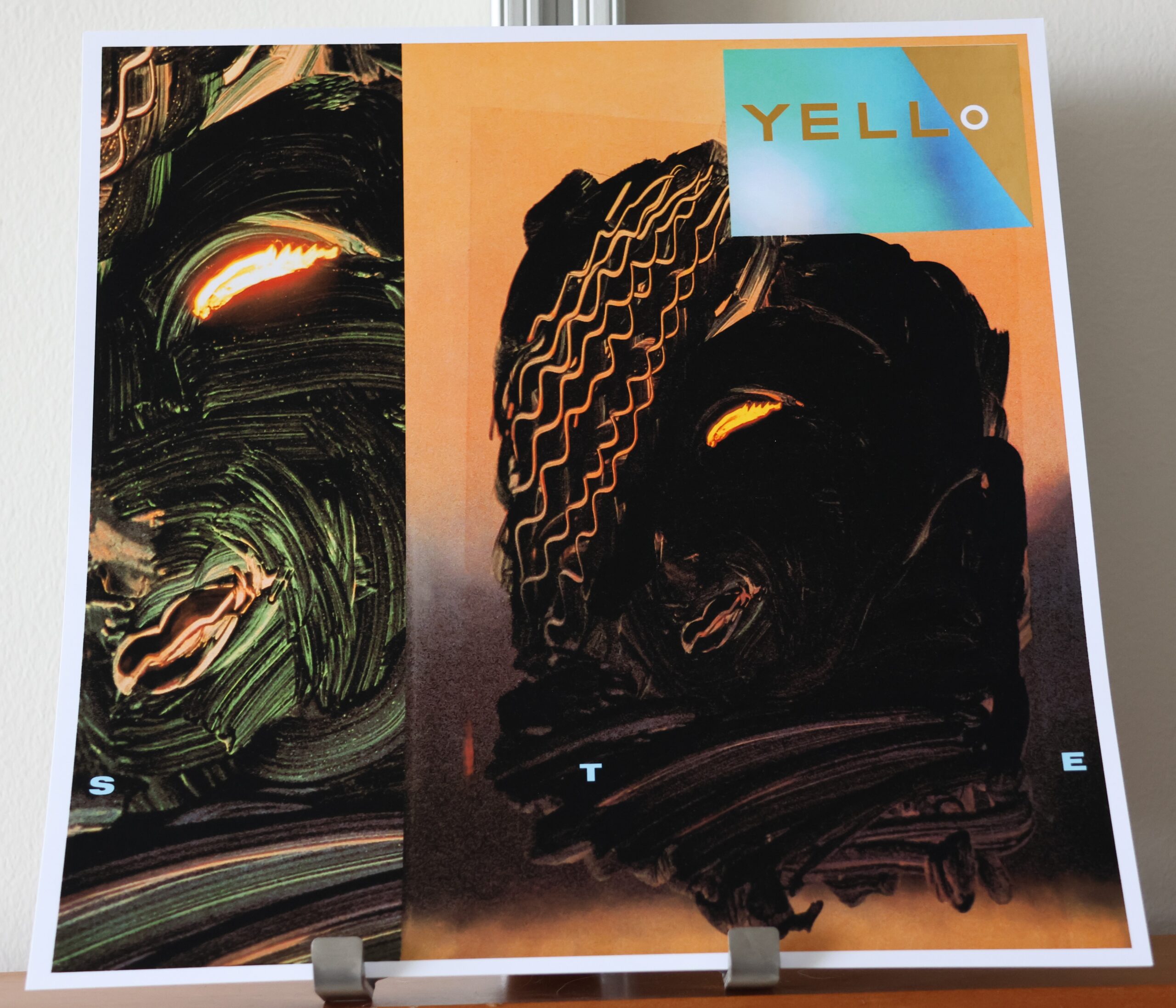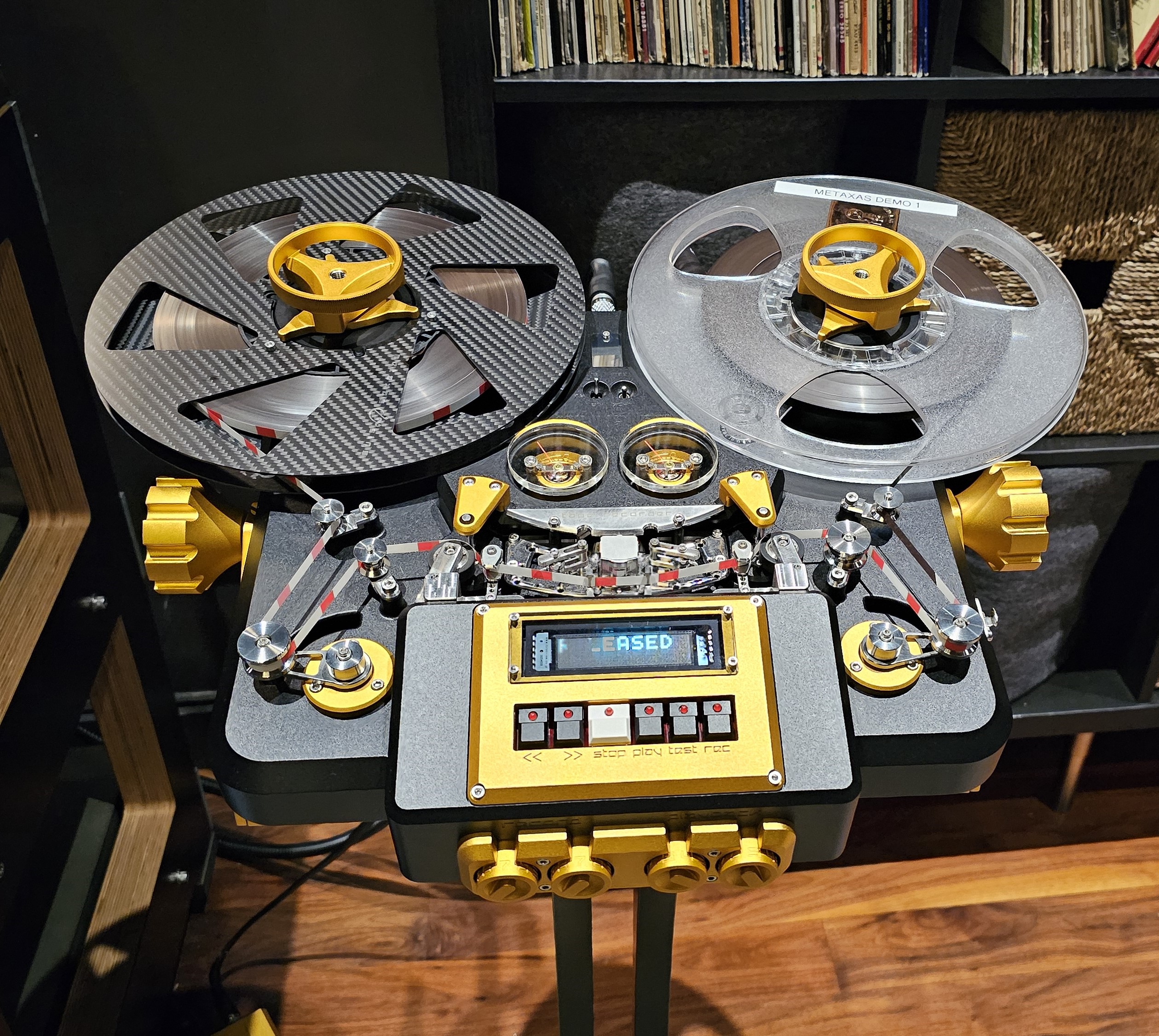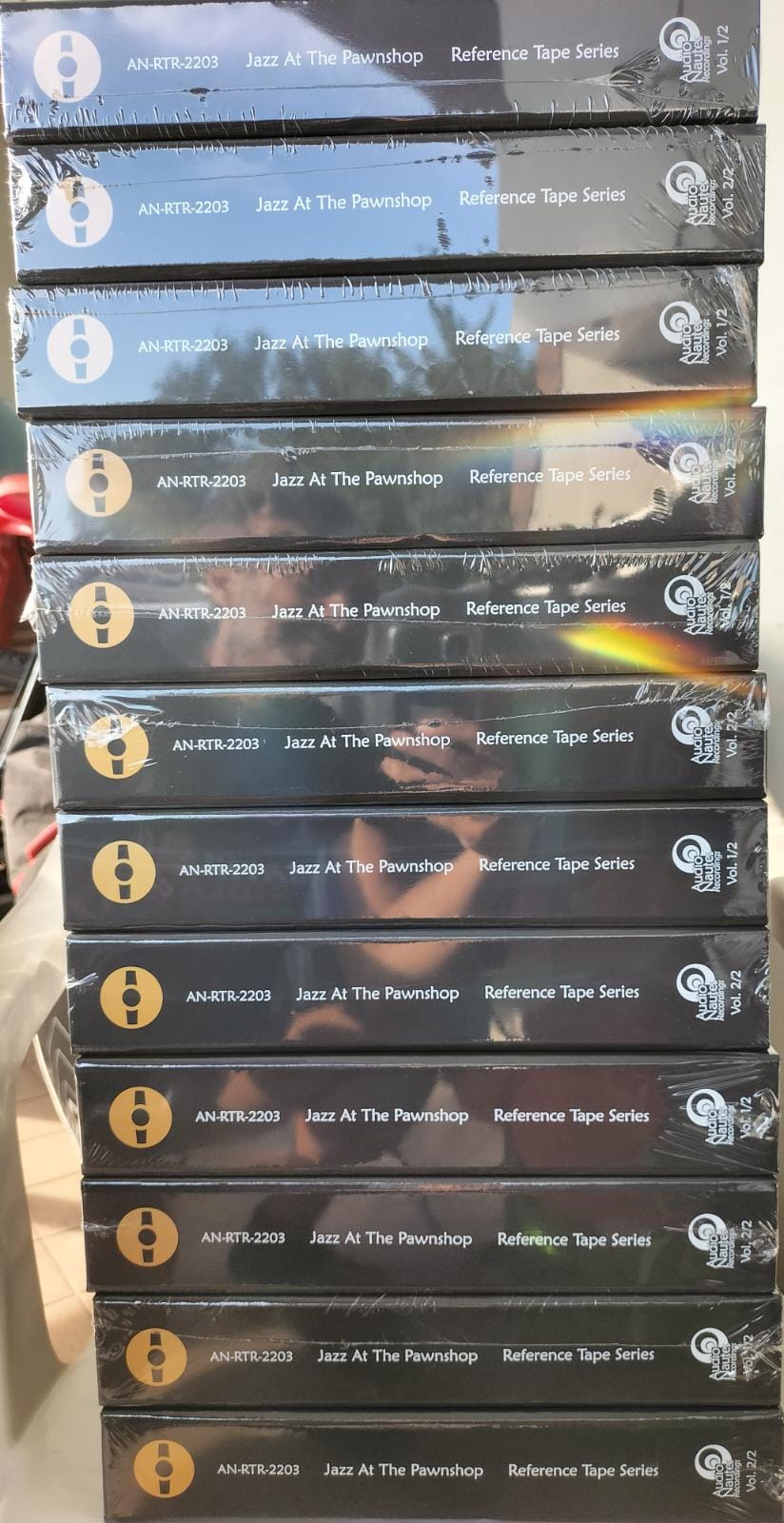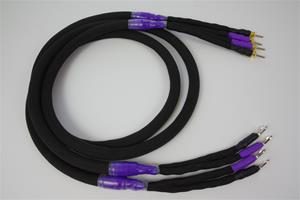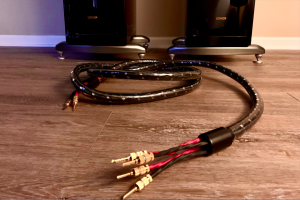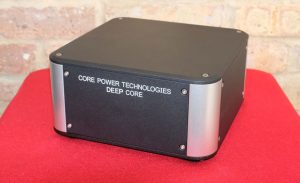Cables, cables everywhere. Thin, thick, round, flat, flexible, stiff, heavy, light, silver, copper, gold, silver plated copper, silver with gold. Just about every possible permutation under the sun.
That brings us to Audience's latest Au24 SX interconnect and speaker cables. Audience's newest top-of-the-line cables are a rare and endangered breed falling into the thin, light and flexible category. Translation. There's no need for any devices to support the cables and take the stress off connectors. There no need to add an extra foot or two to the purchase length (and the accompanying price) to compensate for the cable's stiffness. Do feel free of course to place supports under the interconnect and speaker cables to keep them off the floor and away from power cords.
Audience's newest cables—for all intents and purposes a total rethinking of their design—uses 99.9999 pure OCC copper conductors sheathed in a very high quality XLPE (cross linked polyethylene) dielectric insulator. According to Audience their single-ended (RCA) and loudspeaker cables employ an innovative and very unique and innovative dual concentric coax, perfect lay ribbon wind with opposing angles of the two conductors design. The interconnect cables are terminated with ultra-light, bullet-style RCA plugs that fit snugly into the female RCAs without any fear of loosening with time and repeated plugging and unplugging.
Audience head honcho John McDonald provided for the purposes of this review a complete loom of their top-of-the-line Au24 SX interconnect and speaker cables. In fact, he kindly supplied a 12 ft. pair of interconnects for use between my Doshi V3.0 tapestage and conrad-johnson GAT Series 2 preamplifier; that allowed use of both analog sources (reel-to-reel tape and LPs) for this review. The speaker cables' thinness and flexibility proved especially handy when reversing speaker leads to correct for the absolute phase inverting GAT preamplifier.
There's a lot to like about these cables and the first thing is that Audience runs all their cables in on Alan Kafton's/Audio Excellence AZ (HERE) Audiodharma Cable Cooker before shipping. Instant gratification and no time wasted burning in cables for hundreds of hours. Or in my (and other) cases wasting precious tube life!
Well almost. Using the Cable Cooker is not quite an exact science. The amount of time needed to burn-in cables varies from cable manufacturer to cable manufacturer. From interconnects to speaker cables to power cords. Plus it takes at least another 24 hours (or more) of playing for the cables to settle-in after disconnecting from the Cable Cooker. In the end, using the Cable Cooker is easier, quicker (especially with the latest version of the Cable Cooker) and the outcome sonically better than simply relying on the system to break-in the cables.
Furthermore, interconnect, speaker cables and power cords need time after being uncoiled and hooked up to the system to reach their peak performance. The trio of qualities most affected by disturbing cables are dimensionality, transparency and smoothness. That said, the Audience Au24 SX cables were among the most, if not, the most sensitive cables to being disturbed. Conservatively, it took two or three days of resting in place undisturbed for even totally broken-in Audience cables to sing. Here, the cable's liquidity, delicacy and midrange properties continued to improve with aging. So hang a "Do Not Disturb" sign on the cables and walk away.
Audience also thoughtfully provided a tube of Deoxit for cleaning connectors. Yes, everybody has their favorite contact cleaner; the important point is, however, that dirty connections degrade high-end audio system's transparency and resolution. Not to mention adding an edginess and graininess to the sound. Thus all RCAs, spade lugs, power cable plugs were first cleaned with the Deoxit before plugging in (and periodically after) the Audience cables. But I just don't like oily substances on my connectors so the cleaning process continued with alcohol wash and concluded with a final cleaning with my favorite contact cleaner Kontak. But that's my mishegas.
Initial Impressions: Audience Au24 SX Low Z Phono Cable
Lately, I've been playing around with several different phono cables including but not limited to Audience Au24 SX Low Z (for MC cartridges with internal impedances up to 30 ohms), Transparent Audio XL Gen. 5, Swiss Cables, Lyra Phonopipe, etc. The take home message? The difference in sound among these cables far outstrips the differences in sound between cartridges. (Yes, I'm aware of the electrical interactions among the cartridge, phonocable and phonostage but that's beyond the scope of the review.)
With that in mind, the Audience Au24 SX phono cable was connected to either the Doshi V3.0 or Thoress Phono Enhancer Mk. 2 phonostages. Among the cartridges drafted into service were Lyra's Atlas SL, van den hul's Colibri Stradivarius and Colibri Signature Stradivarius and Fuuga moving coil cartridges. These cartridges were mounted in either VPI's 12-inch 3D (Atlas, van den Hul) or new 12-inch Fat Boy (Fuuga) tonearms. (Stay tuned for upcoming Fuuga and Fatboy reviews!) The Audience cables were also pressed into service for the Merrill Veritas amplifier review (HERE). A variety of albums were enlisted including the "In Your Eyes" cut from Peter Gabriel's So (Classic Records), the "Autumn Leaves" cut from the Direct to disc Pavanne (Eastwind), the "Blue Moon" cut from Dean Martin Dream with Dean (Analogue Productions APP 076-45) and the "End Titles-Eagle Break" cut from my longtime reference Emerald Forrest (Varese Sarabande STV 81244).
First impressions. Audience's Au24 SX phono cable is an excellent sounding product that won't in this day and age of mega-priced cables break the bank. The Audience Au24 SXs are ever-so-easy on the ears and definitely a cable for midrange addicts. These phono cables are as smooth as babies behind with a noticeable lack of graininess and artificiality. The phono cables most impressive quality was without doubt their imaging and ability to really lock down that center image.
For the most part, the Audience cables err on the side of omission rather than commission. Plus where the Audience Au24 SX phono cables err—and though noticeable—never detracts from music enjoyment. Mind you not deal breakers like a couple getting divorced over financial issues or one of them not wanting children. No. More like slight losses here and there that in the end never detract from the cable's excellent musicality.
'Nuther Analog Source: Reel-to-Reel Tape
Decisions, decisions. Which of the many reference 15-ips reel-to-reel tapes to use? After much soul searching, those duties fell to Maya McCraven Quartet (Direct Copy, International Phongraph Inc.), Opus 3 Sampler Tape #2 (Opus 3), Nostros (Yarlung Records), Smoke and Mirrors Percussion Ensemble (Yarlung Records), Frédéric Rosselet performing Bach's Suite No. 3 for Solo Cello in C Major, BMV 1009 and Prokofiev's Lt. Kije with Reiner and the Chicago Symphony Orchestra (RCA Living Stereo/Acoustic Sounds).
Once again, the Audience cable interconnect didn't disappoint. The cable's rich and liquid nature and luscious midrange came through loud and clear. These cables really allowed the system to paint a realistic picture of the Maya McCraven's quartet of cello, bass, drums and vibes performing in your listening room. That's coupled with this Audience's remarkable ability to dig deep down into the mix and capture inner detail such instruments playing ever-so-softly in the background on Smoke and Mirrors.
The cable's low end impact, extension and extreme tactile feel really makes its presence felt on the Smoke and Mirrors tape. Where the Audience Au24 SX fell a little short of my reference cables—take for example the McCraven or Rosselet tape—lies in its ability to capture that ultimate sense of definition and string transient attack or snap on the double bass or cello. Soundstage width here is a teeny bit smaller than the best in my stable such as the Transparent Audio Ref. XL Gen 5 or Skogrand cables. Bear in mind these cables are many times more expensive than the Audience.
Another area where the Audience cables fall a little short of ultimate is their ability to capture every bit of airiness and openness, some of the harmonic overtones and the lightness or nimbleness of instruments on tape. The end result is that recordings take on a slightly darker tone and are a bit heavier sounding. In the end, just a hair too mellow sounding. Where this tends to jump out the most is on Yarlung's fantastic new Nostros choral release that swims in ambience (don't mistake this to say that the ratio of reflected to direct sound is skewed). Think of the old Argo classical recordings and multiply quality by 100 here. This is what choral recordings should sound like!
Capturing the Cable's Gestalt
These cables are custom made for the midrange lovers. Tonally so spot on. Smooth and liquid without sounding like Mississippi Delta mud. Leaning a touch to the yin side of neutral, the Audience cables are ever so easy on the ears without going to the point of making everything sound pretty and obscuring the differences between recordings or singers. You get the weight of Dean singing on Dream with Dean but not so much that it adds colorations or add unrealistic weight Carol Kidd's performing "Angel Eyes" from her collections of standards on All My Tomorrows (Linn Aloi Records AKH 005).
Nor did adding in the interconnects and speaker cables result in too much of a good thing. In fact, just the opposite. The interconnects just brought more of the cable's strengths out especially when talking about soundstaging, imaging and an almost eerie, tactile, three-dimensional feel to instruments. Instruments have a palpable, wrap your arms around the instrument or musician, triode tube-like body with these cables. Take once again the Yarlung 15-ip tape of Frédéric Rosselet performing Bach's Cello Sonatas. This recording is with the Audience cables absolutely mouth watering to say the least. Rosselet's cello is so locked down and dimensional you can in your mind's eye see Rosselet in the room performing for you. But more than that. This cable is a tour de force when it comes to recreating the essential resonant, woody feeling of the cello. Especially the feeling of the instrument's depth. And what dynamics on the Ligeti piece!
What really floats my boat about these cables is their lack of artificiality. They never sound metallic or mechanical—two qualities that drive me absolutely crazy—and let me connect and become one with the music. Never do these cables keep you at arms length from the music. Not here. Just a very natural feel with plenty of ease. Just melting into the listening chair.
The cable's low end is quite good though maybe not quite up not quite up to the standards set in the midrange. To being with, the lowest octave extends on forever. The organ on that fantastic EMI recording of Poulenc's Organ Concerto in G Minor for Organ, strings and timpani with Maurice Durufle playing organ (EMI ASD 2835) at times completely energizes the room. Then just as impressive is the Audience's sometimes startling dynamics in this region. Using the whole loom of cables didn't, however, change that slightly muted transient attack noted about or that slight loss of harmonic overtone in comparison to my reference Transparent or Skogrand cables.
Running a whole loom of cables didn't alter the Audience cable's most obvious coloration either: a slight darkening of the picture and some loss of spaciousness. The best example of this is that amazing 1963 Elektra recording Art of the Koto (Elektra EKS-234) with Kimio Eto playing koto. With the Audience cables, the recording doesn't quite have that envelope of air around the instrument. The sound just doesn't bloom and surround the koto.
Conclusions
The Audience Au24 SX cables pack a lot of wallop into a thin and very flexible cable and are highly recommended for anyone cable shopping. In addition, the Audience Au24 SX Low Z phono cable for moving coil cartridges is also highly recommended to those looking to upgrade their current phono cable. These cables perform way beyond their price point and they certainly didn't embarrass themselves one bit in my reference system. The Audience Au24 SX cables bring with them a highly addictive midrange that grows on you with time. And likely a lot of others out there too.
Technical Highlights
Audience's website contains a very thorough description of the design of Au24 SX cables on their website (HERE). So rather than reinvent the wheel, I thought would ask John McDonald of Audience a few questions about their new cables.
MBA: What are some of the primary differences between the new Audience Au24 SX and earlier Audience cables?
JM: The genesis of the Au24 SX cable line came after 18 years of production of the prior Au24 cable generations (Au24, Au24 e and Au24 SE). Whereas the three earlier generations were represented by improvements in the overall cable design of the same wire, the Audience team for the SX line started over from scratch.
Even though significant aspects of the prior cables were employed in the SX designs, a number of major design improvements were incorporated into the SX cables, including increased purity of the OCC copper, improved quality of the XLPE dielectric, improved geometries, "double" in house cryogenic treatment as well as higher performance connectors. The inspiration behind all of this was simply the ongoing desire to produce higher performance products.
MBA: Could you talk a little more about XLPE dielectric used in your cable and differences between it and more commonly used say Teflon.
JM: XLPE and Teflon are the top two dielectrics available. Overall, we feel that the highest quality XLPE has a more natural sound than Teflon and is much more user friendly due to its flexibility. Therefore, it is the choice of cable dielectrics in most Audience cable designs.
MBA: Your connectors look very similar to the Eichmann bullet RCA connectors.
JM: Audience connectors are similar to Eichmanns in that they are both ultra-low mass designs. Almost all terminations in the SX line are cold crimped without the use of solder.
MBA: You're one of the few cables companies that cryogenically treats your wire in house. Could you describe the process you use?
JM: Audience Au24 SX bulk wire and connectors are cryogenically treated at our in house cryogenic laboratory and then cryogenically retreated again after assembly. For more than twenty years Audience has employed cryogenic treatment which compresses metals under the extreme temperatures which removes air particles on a microscopic level resulting in purer conductive materials thus providing higher conductivity. A graphic illustration of this technology is shown on the Cryogenics International web site. Here you can visually see the more consistent firing of a spark plug that has been cryogenically treated. The Audience team first employed cryogenic treatment in 1998 simply based on the sonic improvements that were perceived by cryogenically treating cables.
MBA: You're one of a few companies that also burns their cables in before shipping!
JM: All Audience cables and powerChord products are burned-in for 60 and 100 hours, respectfully, on Audio Excellence's audiodharma Cable Cooker (HERE).
1m Au24 SX RCA interconnects
Retail: $1800 + $575 for each additional meter.
1m Au24 SX XLR interconnects
Retail: $2400 + $800 for each additional meter.
2m Au24 SX loudspeaker cables
Retail: $3000 + $575 for each additional meter.
1m Au24 SX phono cables (RCA)
Retail: $1965 + $110 for each additional quarter meter.
Audience AV






